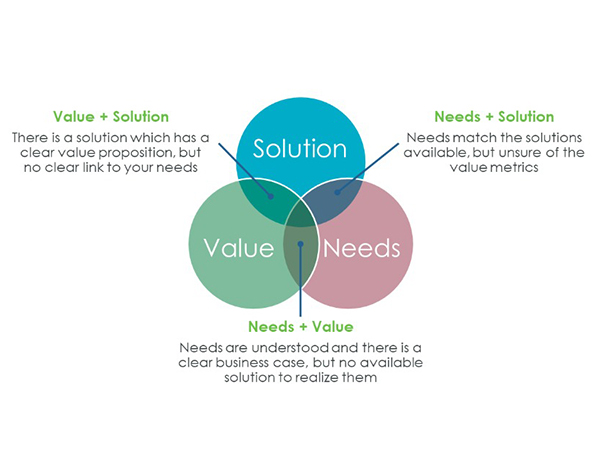
Digital transformation objectives typically revolve around unifying siloed bits of information that span across an organization. Whether it’s prudent customer product usage data or paper-based work instructions, inaccessibility to the wealth of digitized information is a massive bottleneck and missed opportunity for organizations.
While costly holdups like asset downtime are known and digital technologies are increasingly the chosen mechanism to solve them, there are key considerations left out of the digital transformation project scope and by the time an adopter has locked-into a vendor, this lesson is learned in hindsight, often with detrimental impact to time to value. Technology has ushered impressive global change, yet resistance to adopting ‘technology for technology’s sake’ still has truth to it.
Digital transformation can be a costly casualty of this expression and for organizations to not become victims of this they need to plan around these high-level elements of a digital transformation strategy and vendor selection process:
Without consideration of these three key considerations, DX adopters will fall into the DX failures category. Below explains how these three key digital transformation themes impact adopters, are intertwined with one another, and are required for successful digital transformation strategies.
Needs can be viewed as the continuous drivers of the company, such as a manufacturer improving operational efficiencies for better margins or increasing flexibility and agility to differentiate products or services.
Companies across the globe are recognizing with the digital revolution that their business model and needs, must change dramatically to keep pace with shifting market landscapes. Whether it’s a B2B or B2C sale, customers are demanding seamless experiences with product and services, and novel, innovative features that spur intuitive engagement and value-rich lifecycles with the company. Combined with global competitiveness and new methods of production driving efficiencies, companies today must closely and continuously examine their needs to ensure energy and money is spent solving the right problems.
Needs are really the informant of value; a manufacturer like Volvo Group needs are to constantly strive closer to its 0 Part Per Million (PPM) quality goal to deliver on its value proposition and strategic differentiation of high-end quality products for its customers.
Conversely, organizations could use DX as a short-term bandage lacking long-term vision. A manufacturer could turn to mobility to improve workforce productivity but if they’re facing a major looming skill gap with current recruitment, training, and workforce challenges, the value is short-lived. Will the mobility solution transfer knowledge from experienced retiring workers to the next-wave of younger front-line workers? These questions need to be considered to ensure business cases with long-term value to the organization will be at the top of the DX project priority list.
Aligning needs and value informs an organization’s digital transformation strategy and provides the prerequisites for selecting a digital transformation solution. Successful DX adopters who align to value are turning to digital transformation providers who are committed partners versus one-off vendors.
Success with implementing any technology requires a business case at the top-of-the mind, including measurable ROI and the impact selected use cases will have. DX solutions with proven track records relevant to those specific use cases and value sought after by the adopter should be heavily-considered as a DX partner.
One would think it’s self-evident that an outside digital transformation solution is needed to link an organization’s needs with the sought-after value, but a large amount of industrial companies are hesitant to take on large-scale transformation and the cultural change that comes with it. This spurs siloed homegrown development of systems, which face scaling challenges and likely do not integrate with other business units, all while resulting in major expenditures. This is why we see digital transformation projects often led from the top-down; 50% of CEOs put DX at the top of their boardroom agendas.
Effective digital transformation comes with greater change, and ultimately industrial companies need DX solutions to take them ‘from a place to a pace’. The first step can be as simple as acknowledging that the value they seek to fill their needs might require outside ‘digitally native’ expertise and a solution from a well-respected DX provider with a strong partnership ecosystem. This helps to ensure that out-of-the-box solutions are not only capable of being deployed rapidly, but also that they have the flexibility to fit the needs and value required for success.
There are innumerable examples of organizations evaluating a DX initiative with only one or two of the three main ingredients in mind and consequently failing. A company might think it will match with technology providers they’ve used in the past, but now that their needs are shifting as the world becomes increasingly digital, value propositions may not align.
For example, while a ‘top-down’ DX approach will provide the on-ramps for adoption, there can be misalignment of needs with the chosen solution by the CxO versus its front-line worker, who might be the one actually using the technology. The same can be said for assumptions about customer needs when business leaders rely on past assumptions to keep pace with a changing world.
Digital transformation requires unprecedented change as it’s a shift in business strategy, not a one-off software sale or siloed use case. For this step process change to succeed, an organization’s needs, solutions, and value need to be perfectly balanced, as all things should be.
David Immerman is a business analyst on PTC’s Corporate Marketing team providing thought leadership on technologies, trends, markets, and other topics. Previously David was an industry analyst in 451 Research’s Internet of Things channel primarily covering the smart transportation space and automotive technology markets, including fleet telematics, connected cars, and autonomous vehicles. He also spent time researching IoT-enabling technologies and other industry verticals including industrial. Prior to 451 Research, David conducted market research at IDC.
©Copyright 2025. All rights reserved by Modelcam Technologies Private Limited PUNE.